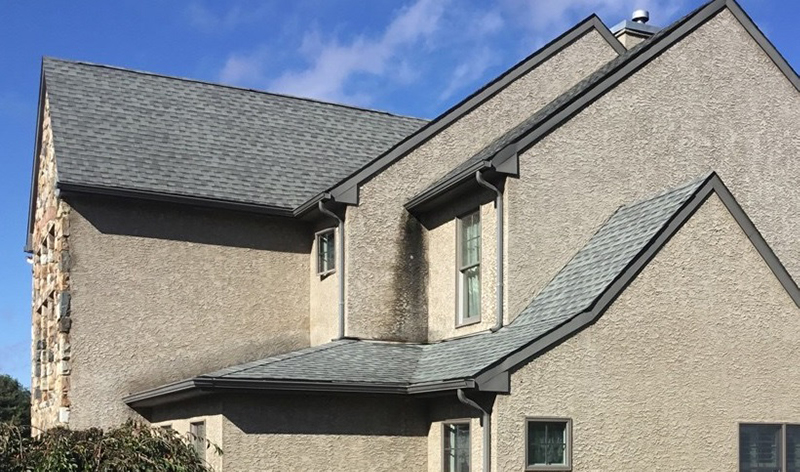Stucco’s influence in architecture and building exteriors spans across the history of mankind. Ancient Greeks applied stucco to the interior and exterior surfaces of their places of worship. The Romans layered stucco across the walls of their monumental creations. Fast forward to the Renaissance era between the 14th and 17th century and stucco played a significant role in the creation of elaborately ornate architectural marvels across Europe.

Towards the 20th century, the charm and utility of stucco extended from monumental structures of historic significance to modest-sized homes across the land. As per the statistics of the Census Bureau’s Survey of Construction (SOC), stucco was the most preferred siding choice for new homes in 2019. Once a visible architectural element throughout the American Southwest, today stucco is seen on homes across America. If you’re in the market for a home and are keen to buy a property with a stucco finish, here’s an article that will tell you what you need to know before buying a stucco-finished home.
The types of Stucco
No two homes are alike and extending this reasoning further, no two stucco finished homes are similar too. The reason lies in the type of stucco used, which can either be traditional or synthetic. Read on to understand the differences between both types of stucco exteriors.
Traditional Stucco
Also known as classic stucco, this is authentic stucco made from cement, lime and coarse sand.
- Traditional stucco can yield textures that range from smooth to rough and cover every possibility in between.
- Classic stucco offers a color palette that’s on the lighter side. Every batch of fresh stucco will yield a shade that’s slightly different, making consistency a problem.
- This stucco is fire-resistant, durable and can last up to 50 years with low maintenance.
- Traditional stucco is more affordable and costs around $10 to $15 for an 80-90 lb bag.
Synthetic Stucco
Also known as acrylic stucco, this version of stucco consists of acrylic resins and sand – to give it the appearance of traditional stucco.
- Synthetic stucco is limited in its range of textures as compared to classic stucco but offers brighter colors that will be consistent from batch to batch.
- Synthetic stucco can expand and contract better when subjected to extreme changes in temperature and therefore, is less prone to cracking.
- The inclusion of polymers raises the cost of synthetic stucco making it a more expensive option. This stucco costs around $40 – $50 per 5 pound bucket.
- Synthetic stucco doesn’t dry out quickly and can lead to water damage issues if not installed properly.
Pros and Cons of Stucco
Whether you settle for a home with traditional or synthetic stucco, here’s an overview of the advantages and disadvantages that come with stucco-finished homes in general.
The good side
- You get weather resistance
Whichever form of stucco you choose, it’s a material that stands up to weather conditions. The modern synthetic variants have an extra edge here.
- Your home will be fire-resistant
Stucco has a fire resistance rating of one hour which means, in the event of a fire, your home will stay protected for a full hour before the fire starts to inflict damage and spread.
- Your home will be paintable
Stucco allows you to paint your exterior, a feature that’ll allow you to renew your home’s exterior from time to time.
- Your exterior will be long lasting
A home with a stucco finish can last for decades when the installation is done right. Having a weather that’s not too extreme too helps extend the life of a stucco home.
The not so good side
- Your exterior can develop cracks
If your foundation shifts or moisture gets in, the stucco can develop serious cracks.
- Your home will need extra insulation
Stucco is not a good insulating layer for your home as compared to say, vinyl siding. This applies more to traditional stucco than modern synthetic stucco, which has better insulation layers.
- Your exterior can get stained
If your home is in an area that’s constantly exposed to rain or moisture, your stucco can develop stains.
Maintenance tips to follow on buying a stucco home:
- Reduce soil movement
You can reduce soil saturation which leads to shifting of your foundation by installing proper gutters and downspouts as well as by ensuring your yard slopes away from the foundation.
- Carry out routine cleans
Make sure the stucco exterior doesn’t accumulate dirt and debris by doing periodical cleans with a bristle brush and garden hose. Avoid high-pressure washes.
- Check mold growth
Control the spread of mold by applying a mixture of non-chlorine bleach and water to stucco areas or patches that are stained.
A stucco home is not only an aesthetic delight but an asset that’ll give you long-lasting returns for very low maintenance. If you have your mind and heart set on buying a stucco home, we hope this detailed article will help you find that perfect option in the variety of stucco homes that come your way. If you’re looking for stucco remediation, home Improvement service, ‘stucco remediation near me’ or just want to know the stucco remediation cost, get in touch with the stucco specialists at Hynes. With years of experience in handling stucco remediations as well as repairs, we are contractors you can count on not only for the right guidance but the perfect stucco installation for your home.

(President, Hynes Roofing and Siding)
With over 35 years experience in the roofing and siding industry, Michelle Hynes has built a business from 2 people into over 45 people and 19 trucks!
